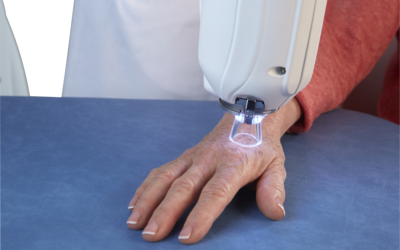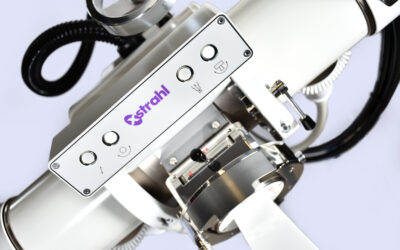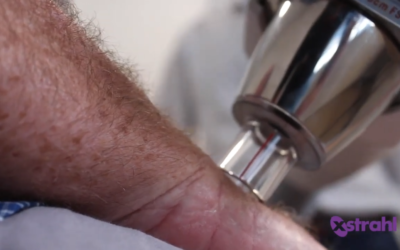The purpose of this study was to empirically characterize and validate a kilovoltage (kV) X-ray beam source model of a superficial X-ray unit for relative dose calculations in water and assess the accuracy of the British Journal of Radiology Supplement 25 (BJR 25) percentage depth dose (PDD) data. We measured central axis PDDs and dose profiles using an Xstrahl 150 X-ray system. We also compared the measured and calculated PDDs to those in the BJR 25. The Xstrahl source was modeled as an effective point source with varying spatial fluence and spectra. In-air ionization chamber measurements were made along the x- and y-axes of the X-ray beam to derive the spatial fluence and half-value layer (HVL) measurements were made to derive the spatially varying spectra. This beam characterization and resulting source model was used as input for our in-house dose calculation software (kVDoseCalc) to compute radiation dose at points of interest (POIs). The PDDs and dose profiles were measured using 2, 5, and 15 cm cone sizes at 80, 120, 140, and 150 kVp energies in a scanning water phantom using IBA Farmer-type ionization chambers of volumes 0.65 and 0.13 cc, respectively. The percent difference in the computed PDDs compared with our measurements range from -4.8% to 4.8%, with an overall mean percent difference and standard deviation of 1.5% and 0.7%, respectively. The percent difference between our PDD measurements and those from BJR 25 range from -14.0% to 15.7%, with an overall mean percent difference and standard deviation of 4.9% and 2.1%, respectively – showing that the measurements are in much better agreement with kVDoseCalc than BJR 25. The range in percent difference between kVDoseCalc and measurement for profiles was -5.9% to 5.9%, with an overall mean percent difference and standard deviation of 1.4% and 1.4%, respectively. The results demonstrate that our empirically based X-ray source modeling approach for superficial X-ray therapy can be used to accurately compute relative dose in a homogeneous water-equivalent medium. They also show limitations in the accuracy of theBJR 25 PDD data.
Johnstone CD, LaFontaine R, Poirier Y & Tambasco M.






